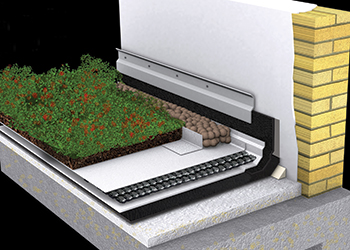
 High performance membranes ... by BituNil.
High performance membranes ... by BituNil.
Developing high-performance sustainable buildings is an absolute necessity, particularly in light of soaring energy costs the world over, says BituNil, which offers an extensive range of roofing and waterproofing products.
In support of green building practices, the Egypt-based company is offering eco-friendly bituminous waterproofing membranes that do not require the hot mopping of asphalt with the associated harmful fumes and odours.
‘Green buildings’ can lower operating costs due to improved energy efficiency and reduced maintenance, says a spokesman for the company.
He says there are several aspects to building design that can help achieve the required points stipulated by various international green building certification programmes used worldwide. For instance, roofing-related points are achieved through three main categories – sustainable sites, energy and atmosphere, and material and resources.
Elaborating on these aspects, he says the sustainable sites category entails adopting “green roof” and “cool roof” systems, where a green roof is a vegetated roof and a cool roof is highly reflective and heat emissive. These can be further subdivided into stormwater design and heat island effects.
In the stormwater design type, a green roof system captures rainwater on-site and reduces stormwater run-off volumes. The term heat-island effect, meanwhile, refers to urban air and surface temperatures that are higher than nearby rural areas and the objective here is to reduce temperature in densely populated areas.
Reducing surface temperature is a green building requirement achieved by both green roof and cool roof systems, the spokesman says.
The second category in building roof design - energy and atmosphere - aims to reduce building energy consumption. One way of doing this is by including an appropriate amount of roof insulation that helps improve the thermal performance of the building envelope.
The materials and resources category is further divided into recycled content and regional material. The recycled content subcategory includes the use of roofing materials that contains post-consumer or post-industrial content that results in waste reduction and contributes to building sustainability. Meanwhile, regional material involves the use of building material that is locally manufactured.
Bitunil’s eco-friendly bituminous waterproofing membranes include EverGuard TPO (thermoplastic olefin) single-ply roofing membranes from GAF of the US, North America’s leading manufacturer of commercial and residential roofing. These have been recognised for their long-term heat and ultraviolet (UV) resistance as well as energy saving as they are highly reflective and heat emissive.
Its other products include green roof systems, which are not only pleasing to the eye and good for the environment, but also an excellent example of energy-efficient construction, the spokesman concludes.





















_0001.jpg)


.jpg)
















.jpg)








.jpg)



